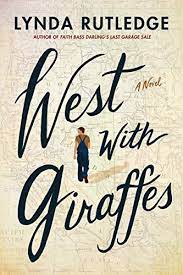Michell, Tom. The Penguin Lessons: What I Learned from a Remarkable Bird. New York: Ballentine 2017. Print.
Had I been told as a child in 1950's England that my life would one day run parallel with that of a penguin -- that for a time, at least, it would be him and me against the world -- I would have taken it in stride. After all, my mother had kept three alligators at the house in Esher until they grew too big and too dangerous for that genteel town and keepers from Chessington Zoo came to remove them.
Description:
After recently watching the film The Penguin Lesson with Steve Coogan, it tickled my interest enough that I really wanted to read author Tom Michell's own words about his escapades with a South American penguin. Lo and behold, in our local library I found a copy of The Penguin Lessons: What I Learned from a Remarkable Bird. I plunged right in and was quickly absorbed into his homey narration.
In 1975, author Michell was an assistant master and resident at an exclusive boy's school in Argentina. While on a vacation in Uruguay and walking along a beach, he noticed hundreds of dark lumps on the shore. These turned out to be dead penguins, recently migrating northward now covered with oil from unloading tankers and washed ashore. Shocked at the sight, he looked closer and found one that was still alive. As he approached it, the penguin, oil-slicked and weak, boldly stood up to defend itself.
Michell decided to try to save it by washing off the oil, capturing the 10lb bird in a string grocery bag and cleaning it in the home where he was house-sitting. Definitely not an easy task, nor a very clean one.
But after the penguin (later named "Juan Salvado") calmed down and allowed Michell to fully remove the oil, the author tried to return it to the ocean. To his surprise, the penguin immediately waddled away from the shore, determined to follow Mitchell wherever he went.
After several more unsuccessful attempts to set it free, and due to a growing respect and love for this bird, Michell decides keep the bird until he can take it to a zoo. But he first must sneak the penguin back to the Argentine boy's school with him. This ridiculous journey involves adventures with buses and trains, customs inspections, feeding, and of course some very smelly pooping (by the penguin).
This is the action of the first few pages, so I am not giving much away. From here on in, Michell recounts decision after decision he faced about the penguin's food, water, exercise, secrecy, and of course what to do when Michell is away from his apartment teaching and Juan Salvado is left alone.
We also get glimpses of the people and life in a small town and school in Juan Peron's politically unstable Argentina. Inflation was 100% per month, so Michell was told to spend his entire paycheck the same day he received it, buying things he didn't even need so he could re-sell them from the school. Otherwise, his money would decrease by 50% the next day.
We meet the people who enter the penguin's life: the school's head of housekeeping who befriends Juan Salvado as one of the students needing her care; the local fisherman who sold Michell the small sprat fish for Juan Salvador; and the school boys who after learning there is a penguin living with a teacher on their grounds, they adopt as a mascot, friend, and confidant. The chapter where a shy, outcast school boy swims with Juan Salvado is absolutely first rate.
The book is delightful, heart-warming, and overall fun to read. Juan Salvado is a star in his new land-locked life, carefully integrated into the lives of every person he encounters. I loved it and hope you find it equally satisfying ...much more so than even that very good movie version of his adventures.
[If this book interests you, be sure to check out:]
Montgomery, Sy. The Soul of an Octopus..
Fascinating up close encounter, study, and even friendship between the author and an aquarium octopus. (Previously reviewed here.)
Happy reading.
Fred
Click here to browse over 470 more book recommendations by subject or title
(and read the introduction to The First Sentence Reader).




